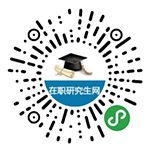- 微信公眾號

政策解讀
- 微信小程序

快速擇校

政策解讀

快速擇校
If sustainable competitive advantage depends on workforce skills, American firms have a problem. Human-resource management is not traditionally seen as central to the competitive survival of the firm in the United States. Skill acquisition is considered an individual responsibility. Labour is simply another factor of production to be hired—rented at the lowest possible cost—much as one buys raw materials or equipment.
The lack of importance attached to human-resource management can be seen in the corporate hierarchy. In an American firm the chief financial officer is almost always second in command. The post of head of human-resource management is usually a specialized job, off at the edge of the corporate hierarchy. The executive who holds it is never consulted on major strategic decisions and has no chance to move up to Chief Executive Officer(CEO). By way of contrast, in Japan the head of human-resource management is central—usually the second most important executive, after the CEO, in the firm's hierarchy.
While American firms often talk about the vast amounts spent on training their work force, in fact they invest less in the skills of their employees than do either Japanese or German firms. The money they do invest is also more highly concentrated on professional and managerial employees. And the limited investments that are made in training workers are also much more narrowly focused on the specific skills necessary to do the next job rather than on the basic background skills that make it possible to absorb new technologies.
As a result, problems emerge when new breakthrough technologies arrive. If American workers, for example, take much longer to learn how to operate new flexible manufacturing stations than workers on Germany (as they do), the effective cost of those stations is lower in Germany than it is in the United States. More time is required before equipment is up and running at capacity, and the need for extensive retraining generates costs and creates bottlenecks that limit the speed with which new equipment can be employed. The result is a slower pace of technological change, And in the end the skills of the bottom half of the population affect the wages of the top half. If the bottom half can't effectively staff the processes that have to be operated, the management and professional jobs that go with these processes will disappear.
1. Which of the following applies to the management of human resources in American companies?
A. They hire people at the lowest cost regardless of their skills.
B. They see the gaining of skills as their employees' own business.
C. They attach more importance to workers than to equipment.
D. They only hire skilled workers because of keen competition.
2. What is the position of the head of human-resource management in an American firm?
A. He is one of the most important executives in the firm.
B. His post is likely to disappear when new technologies are introduced.
C. He is directly under the chief financial executive.
D. He has no say in making important decisions in the firm.
3. The money most American firms put in training mainly goes to .
A. workers who can operate new equipment
B. technological and managerial staff
C. workers who lack basic background skills
D. top executives
4. According to the passage, the decisive factor in maintaining a firm's competitive advantage is .
A. the introduction of new technologies
B. the improvement of workers' basic skills
C. the rational composition of professional and managerial employees
D. the attachment of importance to the bottom haft of the employees
5. What is the main idea of the passage ?
A. American firms are different from Japanese and German firms in human-resource management.
B. Extensive retraining is indispensable to effective human-resource management.
C. The head of human-resource management must be in the central position in a firm' s hierarchy.
D. The human-resource management strategies of American firms affect their competitive capacity.
參考答案:B D B B D
聯考須知:2011在職聯考科目 考試時間 ♦考場守則及違規處理 ♦資格審查 ♦錄取工作
復習指導:在職聯考備考專題 ♦在職聯考歷年真題 ♦如何利用真題 ♦ 如何更有效備考
考試大綱:聯考英語大綱解析 ♦會計綜合大綱 ♦ GCT數學大綱 ♦法碩考試大綱 ♦更多
特別聲明:①凡本網注明稿件來源為"原創"的,轉載必須注明"稿件來源:育路網",違者將依法追究責任;
②部分稿件來源于網絡,如有侵權,請聯系我們溝通解決。

行業適配優勢:覆蓋高需求領域語言學及應用語言學在職研究生畢業生的能力可遷移至多行業,尤其契合當下“語言+技術”“語言+

江西在職研究生就業前景好嗎?就業前景好。贛江新區數字經濟、鄉村振興、制造業升級等政策催生人才缺口。體制內就業有優勢,在考公、事業單位晉升、省屬國企任職上表現突出...

口腔醫學在職研究生考試科目依報考方式而異。非全日制研究生入學考政治、英語、口腔綜合等,還需通過院校復試。同等學力申碩入學一般無考試,大專及以上可申請;申碩考試考...

吉林2026在職研究生正式報名時間公布,10月16-27日可填報。這一消息為吉林在職人員考研提供了明確指引,幫助考生合理安排時間,避免錯過關鍵報考窗口。報名是研...

鐵路局承認在職研究生學歷嗎?鐵路局承認在職研究生學歷,國家教育局已經明文說了,非全日制研究生的學歷和學位證書,具有同全日制一樣的法律效力的。適合的專業包括鐵路交...

管理類專業職場人報考北京在職研究生時,面試環節是職業進階的關鍵挑戰。本文聚焦北京在職研究生面試技巧,為職場人量身定制高效準備方案,涵蓋自我介紹的精煉表達、專業知...
評論0
“無需登錄,可直接評論...”